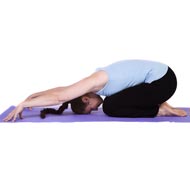- Raja yoga
- Yoga Stretches
- Jivamukti Yoga Poses
- Yoga Tree Pose
- Sun and Moon Yoga
- Wind Removing Pose
- Accomplished Pose
- Urdhva Mukha Pinch Mayurasana
- Revolved Abdomen Pose
- Raised Foot Pose
- Scorpion Pose
- Butterfly Pose
- Half Tortoise Pose
- Revolved Twist
- Balancing Stick Pose
- Cat Pose
- Supported Shoulderstand
- Crane Pose
- Handstand
- Happy Baby Pose
- Firefly Pose
- Scale Pose
- Side Plank Pose
- Upward Facing Two-Foot Staff Pose
- Reclining Big Toe Pose
- Stick Pose
- Revolved Head-to-Knee Pose
- Full Boat Pose
- Upward Extended Feet Pose
- Yoga arm balance poses
- Core Yoga
- Inversion Yoga Poses
- Seated And Twist Yoga
- Horse Pose
- Cobbler Pose
- Seated Wide Angle Pose
- The Compass Pose
- Half Crow Pose
- Bound Half Moon Pose
- Lotus Pose
- Reverse Warrior Pose
- Fixed Firm Pose
- Back-bend Poses
- Forward bend Poses
- Sarvangasana
- Ashtanga Yoga Poses
- Warm up poses
- Seated Poses
- Seated Forward Bends
- Chair Poses
- Standing Poses
- Standing Balancing poses
- Yoga Asanas
- Hatha Yoga Asanas
- Yoga Postures Online
- Partner Yoga Poses
- Anusara Yoga Poses
- Advanced Yoga poses
- Restorative Yoga Poses
- Kids Yoga Poses
- Beginning Yoga Postures
Hare Pose Health Benefits & Variations
The Sanskrit name for Hare Pose is Shashankasana. The meaning of ‘Shashank’ is moon. Shashank in itself is made up of two words, ‘shash’ meaning ‘hare’ and ‘ank’ meaning ‘lap’.
The Shashankasana Pose is said to benefit the practitioner by helping in calming the nerves and providing a feeling of tranquility. The Shashankasana looks similar to a sitting hare, from which it derives its name.
The Hare Pose is counter to Camel Pose (Ustrasana). In Ustrasana, there is a backward bend to the spine whereas in Shashankasana there is a forward bend to the spine. Performing these poses consecutively will help bring about total relief to the spine. The poses are also said to be very effective in reducing stress and anxiety and in improving memory and concentration.
Steps :
- To begin this pose, you should first assume Vajrasana (Diamond Pose). Both your palms should be placed on your knees.
- Keep your neck and spinal cord straight.
- Shut your eyes and begin focusing on your breathing and your body. During the initial stages, you can practice it with your eyes open, but eventually you should be able do it with your eyes closed.
- Take a deep breath and without allowing the elbow to bend, bring your hands above your shoulders. Equal distance should be maintained between your arms with your fingers raised.
- Slowly exhale and reach down to touch the ground with your head and both your hands. Relax when the forehead and palms touch the ground. Some areas of the chest and abdomen will rest on the thighs.
- Let your upper torso relax and remain in this position for a while. Make sure that your arms remain straight. The neck should also be kept straight between the arms.
- To finish, you should exhale and place your palms on your knees. One cycle will be completed with this step. During the initial stages of your practice you could do 5 to 7 cycles.
Precautions :
- Avoid practice of this pose if you suffer from vertigo, slipped disc, high blood pressure, and heart-related problems.
Beginner’s Tip :
- Perform this pose only when you are comfortable doing the Half Headstand.
- When you are coming out of the pose, you should always end with a slow inhalation as it can cause lightheadedness.
Benefits To Body Parts :
- Muscles: It strengthens the pelvis, rib cage, back, and arms. It provides an intense stretch to the back part of the body in the gluteals, arms, back, neck, and shoulders.
- Joints: It helps in the extension of the neck, arms, and spine, and also flexes the knees and hips.
- Heart: Practicing this pose helps improve the circulation of blood to the scalp, face, and brain. It gives a nice glow to the face.
- This pose helps in regulating the adrenal glands.
- When doing this pose, the stomach, spleen and liver are also activated, thus helping in their functioning.
- The Hare Pose is also beneficial to the reproductive organs.
- In addition, the pose is said to massage all the internal organs in the abdominal area.
- Breathing: Compressing the stomach and chest reduces the capacity of air held by the lungs. Breathing also gets constricted at the area of the throat. Shashankasana helps in making use of the back part of the rib cage while breathing and in controlling the breathing speed.
Therapeutic Applications :
- Refreshes the brain and relieves depression, insomnia, and mental fatigue.
- It improves concentration and memory.
- Relaxes the nervous system.
- It helps reduce emotional instability and anger
Variations :
- In one variation, you start with Vajrasana (Diamond Pose) just like in the basic technique. The exception is that your arms are held behind your back with your left hand holding your right wrist. Close your eyes and relax your entire body. Then slowly breathe out and bend forward till your forehead comes near to or touches the ground. After holding this pose for a while, bring your trunk up on an inhalation and come back to the starting position.
- In another variation, rather than keeping the arms behind your back, you can place your fists in front of the portion of the abdomen just below the navel. The knuckles should point and touch each other. The rest of the procedure is just like in the previous variation.
- Pranamasana (Bowing Pose): Begin this variation in Vajrasana (Diamond pose). Hold onto the lower part of your calves above your ankles. Bend forward and keep the crown of your head on the ground in front of the knees. Your head can rest on a blanket that is folded. Let your buttocks come up till the thighs become as vertical as is comfortable. This particular variation directs more blood to the brain. Individuals suffering from vertigo or high blood pressure should practice with care.
- To achieve greater support when performing the Hare Pose, you can interlock your fingers and keep them on the floor in front of you. There will be an even distribution of weight between the sides of your hands, forearms, feet, and shins. As you assume the Hare Pose, let the crown of your head be placed on your fingers and bring your shoulder blades away from your ears. When performing the Hare Pose, you should focus your concentration on the Agya chakra, which is a point between the eyebrows and around one inch inside. Always be sure that your buttocks remain in between the heels, while in this position.



